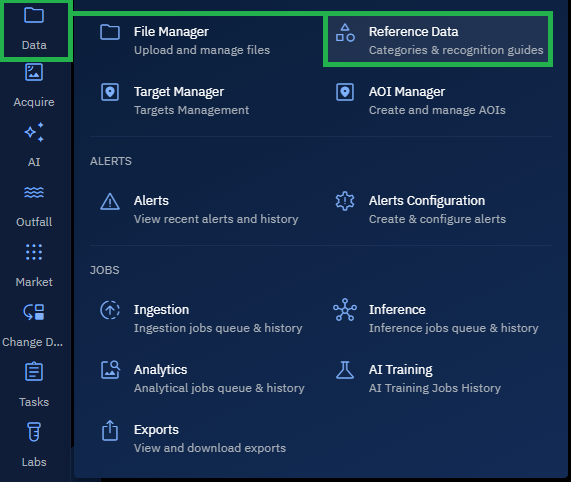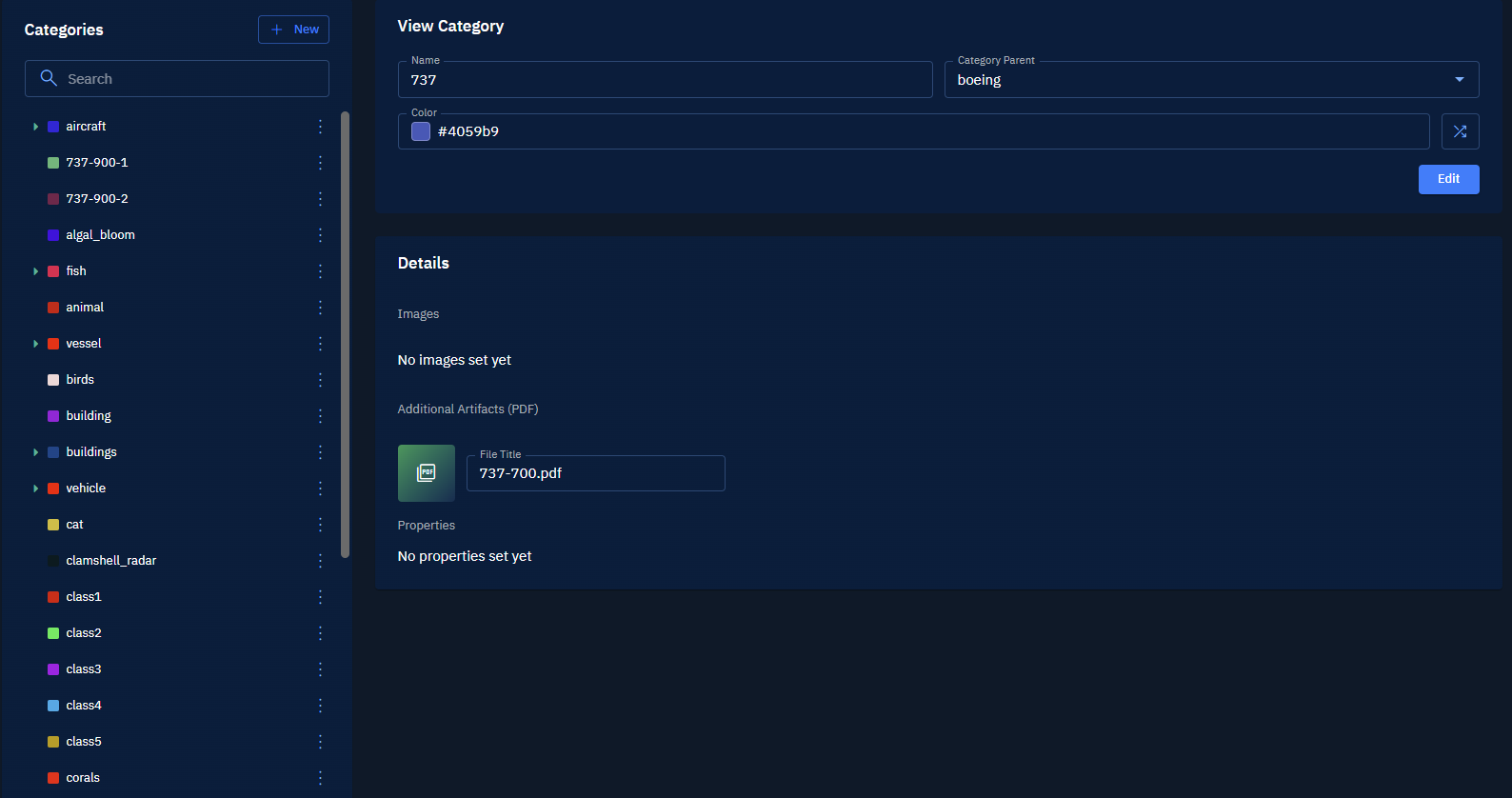Overview: Reference Manager
In this chapter, you will get to know how to create a new category and manage categories to organize your annotation projects effectively. In addition, you will also learn how to create a recognition guide of the category.
Categories help you label images clearly and consistently enabling you to efficiently search, filter, and report.
Accessing Reference Data
In section, you will get to know how to access the Reference Data sub-module.
To access the reference data module, do the following:
-
Login to the platform.
-
Click the Data module, and then click the Reference Data sub-module.

The Categories data page is displayed.

Understanding Parent and Child Categories
You can use categories to logically organize annotations in a clear hierarchy so that you and your team can label images consistently and precisely. By using the Parent and Child categories, you can balance broad classification with detailed, specific types.
| Aspect | Parent Category | Child Category |
|---|---|---|
| Definition | Top-level, general class of objects or features. | More specific type or variation under a parent category. |
| Purpose | Organize broad categories to keep structure clear. | Capture detailed distinctions without cluttering top-level list. |
| Example (Aircraft) | Aircraft | Civilian, Fighter Jets, Light Aircraft |
| Example (Roads) | Roads | State Highways, National Highways, City Roads |
| Benefit | Provides a clear, high-level overview. | Adds precision and detail to annotations. |
Why Use Parent and Child Categories?
- Organize Your Project: Build a clear, logical hierarchy that’s easy for your team to follow.
- Improve Consistency: Ensure everyone uses the same structure and labels.
- Enable Better Filtering and Reporting: Quickly find and review annotations based on broad or specific categories.
- Support AI Training: Provide the model with rich, structured data that improves its ability to learn both broad classes and fine-grained details.
When Should You Use Parent vs. Child Categories?
- Use Parent Categories when you want to define the main, general features you care about.
- Use Child Categories when you need to add more detail or specify types within those main features.